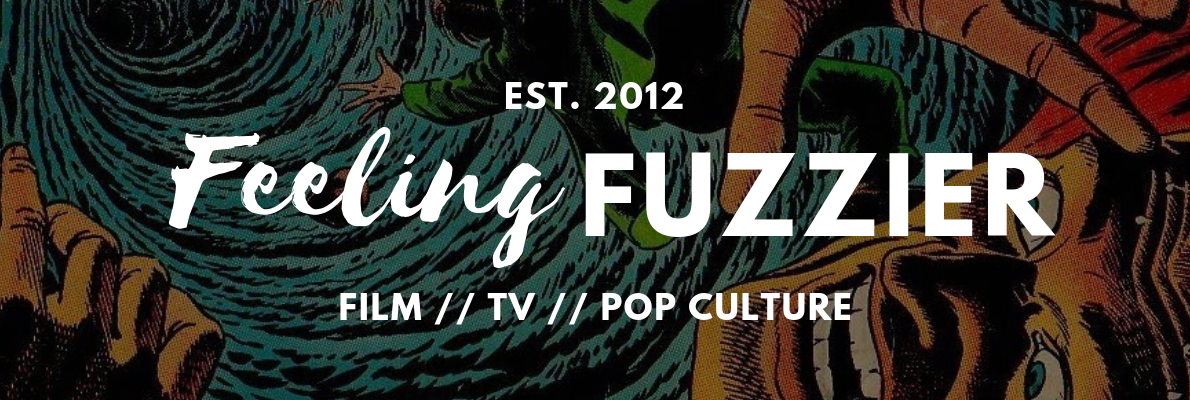.png)
With the sixth and supposedly final Jurassic film arriving in cinemas over the weekend, I thought it was high time I revisited the film that started it all, Steven Spielberg's Jurassic Park.
Jurassic Park is well-regarded for lots of things; it's magnificent blend of computer-generated imagery and practical effects, it's neat adaptation of Michael Crichton's source novel, it's memorable and three-dimensional characters.
But sitting at the root of all these things, is something that I don't think the film gets enough credit for: it's economical storytelling.
Director Steven Spielberg, here at the height of his powers as both a creative force in Hollywood and a 'household name, drawcard director', is able to convey so much, using sparsity and simplicity.
This is a film with a 'core cast' of six, maybe seven characters – Grant, Sattler, Malcolm, Hammond, his grandchildren and the antagonist, Nedry. There are others in their orbit, of course – but the thrust of the film is fixed on those seven, and we get to learn and understand so much about each in a relatively short period of time.
Instead, the first hour of the film fleshes out the world of the film, and its people. We meet Grant and Sattler, two colleagues recruited by an illusive rich man from out of the blue. We come to understand what each character wants, needs and where they are headed, how they will grow.
All the characters, even the smallest, are clearly defined with recognisable, relatable traits or motivations; Grant is measured and intelligent, Sattler is gentle and caring, Malcolm is drawl and charismatic, Hammond is ambitious and a little naive, Nedry is purely driven by money.
Grant's arc – from a cynical and slightly rude academic to a kinder, gentler soul – is nothing new or remarkable by Hollywood standards. But like everything else in Jurassic Park, it's damn effective, through its simplicity and its familiarity.
It's impressive in today's day and age, how long Spielberg keeps his audience in anticipation of the selling point – the dinosaurs themselves. As a director and a storyteller, he understands how to build tension, and duly keeps his cards close to his chest.
After some brief glimpses in the first scene (an eye, a claw), we're kept waiting for a genuine, full-blooded dinosaur for upward of 20 minutes, and that first look is complemented by wide-eyed wonder by the characters and a soaring John Williams crescendo.
The film's most iconic sequence – when the T-Rex attacks the jeeps in the middle of a midnight thunderstorm – doesn't arrive until the midpoint, an hour into the runtime. There's no rush to plunge audiences in right away, but a deliberate patience that builds towards something memorable.
In many ways, it's similar to Spielberg's experience on Jaws; the limitations of the technology at that time necessitated that the shark be used sparingly, and the same can be said for Jurassic Park.
The latter isn't just a success from a narrative stance; it's a technological marvel too. Spielberg's team brilliantly blends practical and digital, using the latter in little doses to ensure the seams don't show. In fact, there's less than five minutes of CGI dinosaurs in the entire film, with most of the key moments employing sublime animatronics to fantastic effect.
Just for a second think about the scientific ideas that Jurassic Park is grappling with; technology, power, capitalism, chaos theory, playing God and so on. When was the last time a major tentpole film – that topped the box office that year, no less – had as much on its mind as this? A four-quadrant blockbuster where the four main characters sit down and discuss the moral ambiguities of science and philosophy over dinner – and makes it engrossing, thoughtful and memorable?
It speaks to the brilliance of Michael Crichton and David Koepp's screenplay that this thematic material doesn't ever feel dull or ponderous. Instead, the meaty, talky first half feels perfectly at balance with the frightening, hack-and-slash second half.
Which is good, because when things get scary, they get really scary – particularly the raptors, as they stalk the kids through the kitchen, sneak up and rip Muldoon to shreds, jump out at Laura Dern and lop off people's arms.
It goes without saying, given that we're talking about Spielberg in his prime, but damn this film just looks incredible. There's an iconic image or frame literally every five to ten minutes, from the water rippling on the jeep's dashboard to the raptor breath fogging up the kitchen window.
Your mileage may vary – but for me, this is the zenith of Spielberg's career, above Jaws, Indiana Jones and ET. And it goes without saying that across a further five entires, the series hasn't come close to replicating the awe and wonder and scares and surprises of Jurassic Park.




No comments:
Post a Comment